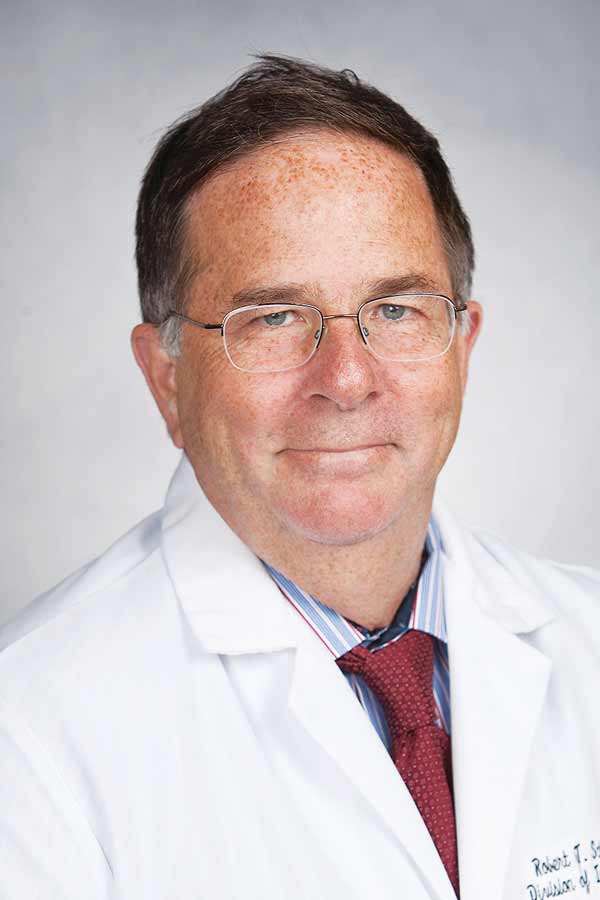By:
- Erika Johnson
Published Date
By:
- Erika Johnson
Share This:
Q&A: Experts Discuss New COVID-19 Variants and Vaccine Effectiveness
In November 2020, a new variant of COVID-19 was identified in the United Kingdom (B1.1.7). A month later, it was announced another variant had been uncovered in South Africa (B1.351). Yet another variant emerged in January 2021 in Brazil, known as P.1. A virus can mutate when it copies itself as it spreads. Some mutations can be damaging to a virus, causing it to die out. Others can strengthen and help it spread. Scientists are keeping a watchful eye on the new variants, which are found to be highly contagious with possible higher mortality rates.
We reached out to UC San Diego experts to learn more about the prevalence and characteristics of the new variants, as well as to discover whether current vaccines are expected to remain effective. Robert “Chip” Schooley, professor in the Department of Medicine at UC San Diego School of Medicine, and Natasha Martin, associate professor of medicine at UC San Diego School of Medicine, have led the development and growth of the university’s Return to Learn program that has kept campus positivity rates far below average.
Q. When was the new B1.1.7 strain of COVID first detected in the United Kingdom, and is it present in San Diego County?

Natasha Martin
Martin: The new COVID variant was first detected in the United Kingdom in November 2020 from a sample that was taken in late September. It quickly expanded to become the dominant strain in December in the UK. It was detected in San Diego County on Dec. 30 by a team of researchers at Scripps Research Institute and UC San Diego, led by Kristian Andersen, professor of Immunology and Microbiology. Current estimates by Anderson indicate that the prevalence of the B1.1.7 strain presence is approximately 5% in San Diego County.
Q. What is unique about this new strain of COVID?
Martin: What we have seen in countries where the B1.1.7 variant has emerged—such as the UK, Ireland, and Portugal—is that it rapidly expands to become the dominant strain. And this has coincided with a surge in infections. Several studies across Europe have estimated that the B1.1.7 strain is more transmissible. The precise value is uncertain, but it appears to be between 35% and 75% more transmissible than previous strains. A recent study by the scientific group that advises the UK government indicates that this strain might also be associated with a 30% higher mortality rate.
Q. Why is B1.1.7 transmitted so quickly, and does it cause more severe symptoms?
Schooley: B1.1.7 grows more rapidly than the strains that we have been encountering in the past because of the changes in the protein that bind to the viral receptor on human cells. This allows it to grow up to higher levels, and people who become infected tend to shed larger amounts of virus. When they come into contact with others, they are more likely to transmit the virus to them. In addition, perhaps because the virus grows more rapidly, it can cause more severe disease, especially in people who are at risk for more severe disease to start with. People over the age of 65 who are admitted to the hospital with the new strain of virus have a mortality rate that is 30% higher than those with the currently dominant strains.
Q. What do we know about the variant that has appeared in South Africa? Is it present in the U.S.?
Schooley: The new variant that has been identified in South Africa, B1.351, is of concern because it is less sensitive to the available vaccines. It could make it necessary to distribute booster shots that incorporate elements that mimic its spike protein. This will complicate issues related to travel and vaccine rollout logistics. It was detected earlier this week in two South Carolinians who had no history of travel to South Africa. This suggests that it has been circulating in the U.S. for some time.
Q. Do current vaccines protect against the new variants?
Martin: The evidence we have is that the Moderna and Pfizer vaccines are effective against the B1.1.7 variant. However, there is data that existing vaccines may have reduced efficacy among other variants, such as the one identified in South Africa. The vaccine is still effective, but slightly less so. Regardless, it is important to note that we need to minimize the amount of virus circulating in our communities to reduce the effect of the B1.1.7 expansion and the emergence of other variants by vaccinating as many people as quickly as possible.
Q. What are the potential impacts of this new variant in San Diego?
Martin: Our modeling indicates that as the B1.1.7 strain becomes the dominant strain in San Diego due to its increased transmissibility, this could lead to a reversal in the recent declines in infections we have observed. One of the measures we look at is called the effective reproduction number, or how many infections are caused by an infected individual today. Right now, the reproduction number is below one, meaning that every infection leads to less than one new infection, and we see a declining number of cases.
Unfortunately, because this B1.1.7 strain is more transmissible, even if behavior stays the same, the increased transmissibility of the strain could push that reproduction number above one, leading to an expansion of cases. What we are worried about is this potential resurgence in cases and resulting hospitalizations due to the expansion of this strain. Within a matter of weeks to months it could cause an increase in infections, resulting in hospitalizations and deaths.
Q. Are masks still effective?

Robert “Chip” Schooley
Schooley: Masks remain a key element in the control of viral spread. Because the new viral variants are more transmissible, it is more important than ever that they be used and that we all continue to pay attention to all other measures that we have learned reduce spread of the virus.
It has been suggested by some that people should “double mask.” While one might make the case that this could be more effective than a single mask, this virus is spread more by small (aerosol) particles than by droplets, and aerosols will still escape around the edges of masks. Double masks don’t prevent this. Thus, one should not rely on putting on a second mask to protect from infection to the extent that you would do anything you would not do with a single mask.
Q. What are the implications of the recent lift of the stay-at-home orders?
Martin: The effect of the lifting of these stay-at-home orders is that they could lead to an increase in contact rates. Increasing contact, on top of the expansion of a variant that is more transmissible, could further exacerbate a potential increase in surge of infections. We can keep viral spread low by adhering to masking and social distancing and staying at home to reduce the viral spread and likelihood of new variants emerging that may be more transmissible or lethal.
Q. What are the best- and worst-case scenarios in the months ahead?
Martin: The best-case scenario is that we get as many people vaccinated as quickly as possible, and we reduce transmission through masking adherence and continuing to stay at home as much as we can. That would mitigate some of the effects of the expansion of the variant and we could remain within our hospital resource capacity.
The worst-case scenario is if we vaccinate people slowly and open up society too quickly, increasing our contact rates. Our modeling projections indicate that cases could escalate very quickly in a matter of weeks to months, quickly overwhelming our hospitals.
Q. Does UC San Diego’s PCR tests and wastewater monitoring program detect the potential presence of this strain on campus?
Martin: Teams led by UC San Diego’s Rob Knight, professor and director of the Center for Microbiome Innovation, and Scripps Research Institute’s Kristian Anderson are currently expanding sequencing efforts across the campus so we can track the various strains, both among individuals and also in our wastewater samples. This sequencing effort will provide valuable information on what is circulating in our community and allows us to adapt our public health efforts if we see transmission and expansion of concerning strains.
Q. What extra precautions should be taken by the campus community?
Schooley: Natasha Martin has done some very insightful monitoring that shows that if we back off on the interventions we've done so far, this new variant, as it replaces the old variant, will drive us to numbers of cases in San Diego County we haven't seen before. And we barely escaped this last surge in terms of being able to manage it in the hospitals. I would encourage people to be incredibly assiduous in wearing masks, to refrain from being indoors without masks with people who are not in your immediate family, and to limit travel until we get this under better control.
To learn more about the emerging COVID variants, please see the Centers for Disease Control and Prevention website. We also encourage campus community members to visit the Return to Learn program website for current updates on university safety measures.
Share This:
Stay in the Know
Keep up with all the latest from UC San Diego. Subscribe to the newsletter today.



